Maintaining a clean and inviting bar is crucial for both customer satisfaction and health regulations, as it directly influences customer perception and ensures adherence to health standards.
A comprehensive bar cleaning checklist ensures that every corner is spotless and enhances the overall experience, contributing to effective bar management and smooth operations.
This guide explores what a bar cleaning checklist entails, why it is essential, and how often your establishment should be cleaned to maintain high bar hygiene.
It also breaks down specific areas to focus on, and essential supplies needed, and provides a sample checklist to get you started, including daily cleaning routines and deep cleaning tasks.
Dive in to discover how a systematic approach can elevate your bar’s cleanliness and efficiency, ultimately enhancing the guest experience.
Look into: How Does Steam Cleaning Work
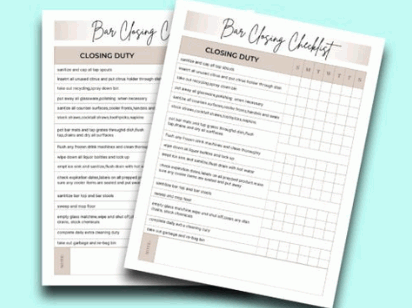
What Is a Bar Cleaning Checklist?
A bar cleaning checklist is a comprehensive guide designed to ensure that all cleaning tasks and sanitation practices are effectively implemented, promoting cleanliness and hygiene in the bar environment, which is vital for health inspections. The checklist serves as a vital document for bar management and staff, detailing daily cleaning routines, weekly checklists, and deep cleaning procedures that contribute to maintaining a clean and safe atmosphere for customers, including specific cleaning responsibilities and tasks. It encompasses various aspects, including the maintenance of bar tools, beer taps, and other equipment essential for delivering a high-quality guest experience.
Why Is a Bar Cleaning Checklist Important?
A bar cleaning checklist is essential for maintaining high health standards and improving customer perception of cleanliness and service quality in the establishment.
Not only does this organized tool foster a reliable routine, but it also serves to reinforce customer trust and provides a clear overview of the cleaning methods being employed. When patrons see staff adhering to a cleaning checklist, it provides them with confidence that their health is a priority. Adherence to such standards can significantly influence health inspections, ensuring that establishments meet or exceed regulations.
Failure to maintain cleanliness can lead to higher cleaning costs, as extensive measures may be required to rectify neglected areas and impact the overall bar experience. Consistent upkeep through a checklist minimizes these risks, promoting a welcoming atmosphere that enhances the overall bar experience and encourages repeat visits from customers.
- Effective cleaning reduces the likelihood of pest problems, which can severely affect customer perception and safety.
- Regularly updated checklists ensure no task is overlooked, supporting efficient cleaning routines and maintenance of bar tools.
- Enhanced cleanliness directly correlates with better customer reviews, which is crucial for successful inventory management and overall bar operations.

How Often Should a Bar Be Cleaned?
Cleaning frequency in a bar is crucial to maintaining a quality environment, with daily cleaning tasks complemented by a thorough weekly checklist to ensure no area is overlooked.
Establishing a consistent cleaning routine not only enhances the aesthetic appeal but also plays a pivotal role in ensuring the safety and satisfaction of patrons, ultimately impacting their overall guest experience. Daily cleaning routines should include tasks such as:
- Wiping down counters and tabletops to remove spills and crumbs is a critical daily cleaning task that reinforces sanitation practices.
- Cleaning glassware and utensils to prevent contamination is essential for maintaining high health standards in the bar.
- Sweeping and mopping floors to eliminate dirt and debris should be part of an established cleaning schedule that includes thorough cleaning methods for the entire bar.
Meanwhile, the weekly deep cleaning checklist should cover:
- Taking out and washing the rugs is a necessary step in the weekly checklist to maintain cleanliness and hygiene in the bar.
- Sanitizing all surfaces, including bar sinks, taps, and beer lines, is vital for upholding health standards and ensuring customer safety.
- Inspecting the HVAC system to ensure optimal air quality is a key component of maintaining a clean bar environment, contributing to overall guest satisfaction.
By prioritizing these cleaning schedules, bar owners can significantly boost bar hygiene, offering guests a more pleasant experience that encourages return visits.
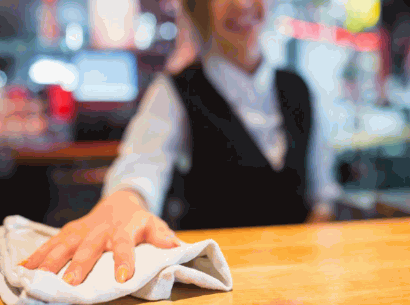
What Areas of the Bar Should Be Included in the Cleaning Checklist?
The areas of a bar that should be included in the cleaning checklist encompass critical zones that directly affect cleanliness, organization, and the overall guest experience, such as the bar counter, equipment, glassware, and restrooms, as well as liquor inventory and garnishes.
Bar Counter
The bar counter is one of the most critical areas to maintain cleanliness, as it is the primary point of interaction between bartenders and customers, where drinks are crafted, orders are taken, and conversations flow. This vibrant space not only serves functional purposes but also plays a significant role in shaping customer experiences and perceptions of overall hygiene in the establishment.
To ensure that the bar counter remains inviting and sanitary, it’s vital to follow a consistent cleaning regimen, including effective cleaning solutions and sanitizing procedures. Proper sanitizing procedures include:
- Wiping down surfaces with a suitable disinfectant after each customer interaction.
- Regularly cleaning spills to prevent sticky residues and unpleasant odors.
- Using cloths or disposable towels designated solely for this area to avoid cross-contamination.
Essential cleaning supplies for this process typically involve cleaning supplies that are efficient and safe for use around food and beverages.
- Multi-surface cleaners that can effectively eliminate various types of grime.
- Food-safe sanitizers are suitable for bar equipment and surfaces.
- Microfiber cloths are ideal for absorbing dirt without leaving lint.
A well-maintained bar counter significantly elevates customer perception, showcasing the establishment’s commitment to hygiene and quality service. When patrons see staff diligently cleaning and maintaining the area, it fosters trust and encourages repeat visits.
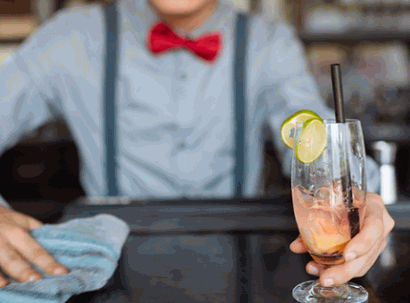
Bar Equipment
Cleaning bar equipment, including beer taps, coolers, and other bar tools, is essential to ensure operational efficiency and maintain hygiene standards.
Regular cleaning routines not only enhance the longevity of the equipment but also ensure that patrons receive high-quality beverages. Over time, residue can accumulate in various tools, leading to unappealing flavors and even potential health hazards.
- Utilizing the right cleaning solutions for each type of tool is crucial; for instance, safe disinfectants can be employed for surfaces, while specialized cleaners are designed for taps and other equipment.
- Neglecting these important practices can result in costly repairs and replacements, ultimately affecting the bar’s reputation and profitability as well as increasing cleaning costs.
Thus, by instituting a thorough maintenance protocol, establishment owners safeguard not only their investment but also the satisfaction of their clientele, ensuring compliance with health standards.

Glassware
Proper cleaning of glassware is crucial for providing customers with the best experience, as dirty glasses can lead to negative customer perception and affect their likelihood of return visits.
To ensure that every guest enjoys their drink without distraction, utilizing effective cleaning supplies is essential. Not only does a sparkling clean glass enhance presentation, but it also reflects the bar’s commitment to hygiene and quality.
It’s important to incorporate the following cleaning strategies to ensure high standards of hygiene:
- Use specialized glass-cleaning solutions that are safe and effective in removing residues.
- Implement a rigorous sanitizing procedure, ensuring all glassware is thoroughly rinsed and air-dried to prevent any chemical traces.
- Train staff on the proper handling techniques to minimize contamination during service.
By focusing on these cleaning practices, establishments can foster a positive atmosphere, encouraging repeat visits and reinforcing their reputation for excellence in bar operations.
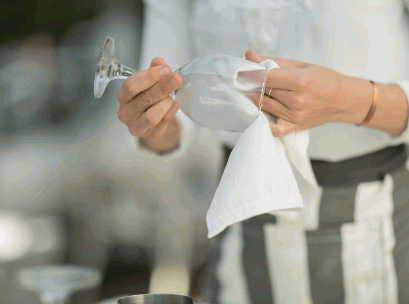
Floors
Maintaining clean floors is vital for bar safety and hygiene, as spills and debris can pose hazards to both staff and customers. Ensuring the cleanliness of these surfaces also fosters a welcoming atmosphere that invites patrons to return and enjoy their experience without worry.
To achieve this, different cleaning methods and solutions should be employed based on the type of flooring found within the establishment, ensuring a thorough cleaning routine. Regular maintenance not only enhances the overall ambiance but also prolongs the life of the floors. Consider the following approaches for various floor types common in bars:
- Wooden Floors: Use a damp mop with a pH-neutral wood cleaner to prevent warping and significant wear.
- Tiled Floors: A solution of warm water and vinegar can effectively remove stains while enhancing shine.
- Carpeted Areas: Regular vacuuming, combined with professional steam cleaning every few months, removes accumulated dirt and allergens.
Incorporating these cleaning practices allows for a pleasant drinking environment that leaves a positive impression on guests and enhances their overall experience.
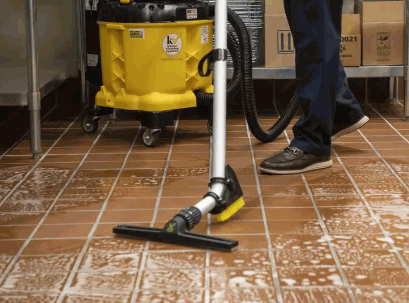
Restrooms
Restrooms in a bar must meet high health standards, as they significantly impact customer perception and overall satisfaction.
Regular cleaning tasks are essential to maintain the pristine condition of this vital space, including thorough sanitation practices. By implementing a structured cleaning routine, bars can ensure that high-traffic areas are consistently sanitized, bolstering their reputation for cleanliness and hygiene. This involves using effective supplies such as disinfectant wipes, biodegradable soaps, and industrial-strength cleaners that are crucial for maintaining a high standard of cleanliness.
- Daily tasks should include mopping floors, wiping down surfaces, and managing trash disposal to ensure a tidy environment.
- Weekly deep cleans might involve scrubbing toilets and sinks, as well as inspecting for any plumbing issues, ensuring everything meets health inspection standards.
- Monthly inspections can help address any issues like plumbing leaks or broken fixtures, which are critical for maintaining overall sanitation practices.
By prioritizing cleanliness, establishments not only uphold hygiene standards but also enhance the overall guest experience, encouraging patrons to return.
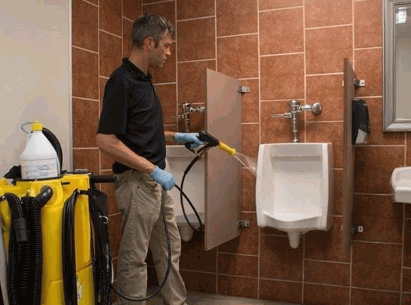
Tables and Chairs
Tables and chairs are high-contact areas in a bar and require regular cleaning to ensure a pleasant atmosphere for guests.
To keep these surfaces inviting, it is crucial for venues to establish a systematic cleaning routine that not only includes frequent wiping down, but also thorough sanitizing procedures to ensure they meet health standards. For instance, after each patron departs, staff should be trained to:
- Use appropriate sanitizing wipes on surfaces
- Pay close attention to nooks and crannies where dirt and germs can accumulate
- Regularly check for wear and tear that might compromise hygiene
By adhering to these practices, bars can significantly enhance cleanliness, thus elevating the overall guest experience and ensuring that visitors feel safe and comfortable during their time at the establishment.
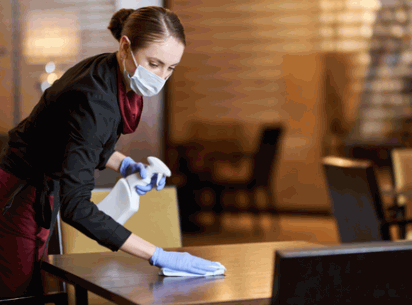
Trash and Recycling Bins
Proper trash disposal and recycling practices are essential in a bar to maintain cleanliness and meet environmental standards.
In a bustling bar environment, the responsibilities associated with managing waste go beyond simply emptying bins. Employees must regularly monitor the trash and recycling stations, ensuring they are strategically placed for easy access by patrons. Adherence to a strict schedule for disposal not only enhances the aesthetic of the establishment but also minimizes odors and pests.
- Regularly check and replace liners in trash and recycling bins to prevent leakage.
- Implement clear signage to help patrons understand which items belong in each bin.
- Coordinate with local waste management services to establish a reliable pickup schedule.
Staff training on proper disposal methods can significantly improve overall efficiency, fostering a culture of responsibility toward both cleanliness and sustainability.
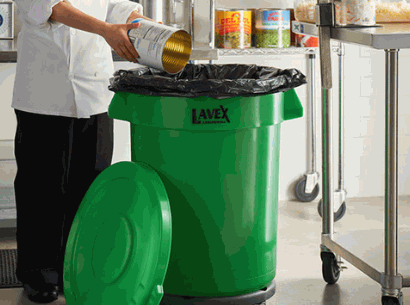
Back Bar and Shelves
The back bar and shelves require regular cleaning to maintain organization and ensure easy access to supplies and inventory.
Proper maintenance of these vital areas not only enhances the overall aesthetic of the bar but also significantly boosts operational efficiency. Implementing a systematic cleaning checklist can aid bartenders in identifying priority tasks, ensuring that essential items are readily available when needed. Consider including the following items on the checklist:
- Wiping down all surfaces to eliminate dust and spills.
- Organizing bottles and supplies for easy visibility.
- Regularly check expiration dates on garnishes and mixers.
- Sanitizing glassware and utensils to uphold hygiene standards.
By adhering to these practices, bar staff can focus on delivering exceptional service, ultimately leading to heightened customer satisfaction.

Refrigerators and Coolers
Regular cleaning of refrigerators and coolers is vital to maintain appropriate temperatures for food and beverage storage, ensuring quality and safety.
Along with routine cleaning, it’s essential to prioritize several key maintenance tasks. Regularly checking the temperature settings and ensuring that seals are intact not only prolongs the life of these appliances but also prevents spoilage of stored goods.
Key actions include:
- Wiping down interior surfaces with a mixture of baking soda and water to eliminate odors and prevent bacteria buildup.
- Inspecting shelves for any spills or rot, emphasizing the importance of keeping fresh ingredients accessible.
- Organizing inventory to use older items first, helps to minimize waste and ensure only the freshest products are on hand.
By implementing these practices, a consistent standard of cleanliness and efficiency can be achieved, significantly enhancing the quality of food service operations.
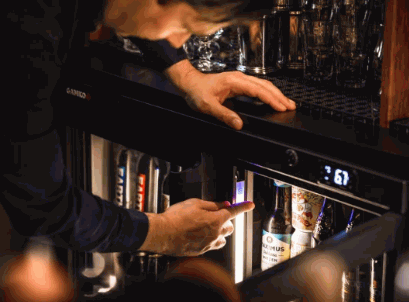
What Cleaning Supplies Are Needed for a Bar Cleaning Checklist?
A comprehensive bar cleaning checklist necessitates a variety of cleaning supplies to effectively tackle various cleaning tasks and maintain sanitation practices throughout the establishment.
Disinfectant Cleaner
Disinfectant cleaners are vital in bars to eliminate harmful bacteria and pathogens, ensuring high sanitation practices, which not only protect the health of patrons but also enhance the establishment’s reputation and compliance with health regulations.
Different types of disinfectant cleaners can be utilized in bars, each serving a specific purpose. For instance, surface disinfectants are essential for cleaning countertops, tables, and other frequently touched areas, while specialized food-safe cleaners are necessary for kitchen utensils and appliances.
- Application methods: Effective application involves using spray bottles for even coverage, soaking methods for stubborn stains, and disposable wipes for quick clean-ups.
- Maintaining adherence to recommended dwell times is crucial to ensure that the disinfectants effectively kill pathogens.
Ultimately, the consistent use of appropriate disinfectant cleaners not only fosters a safe environment for staff and guests but also fosters loyalty among clientele.
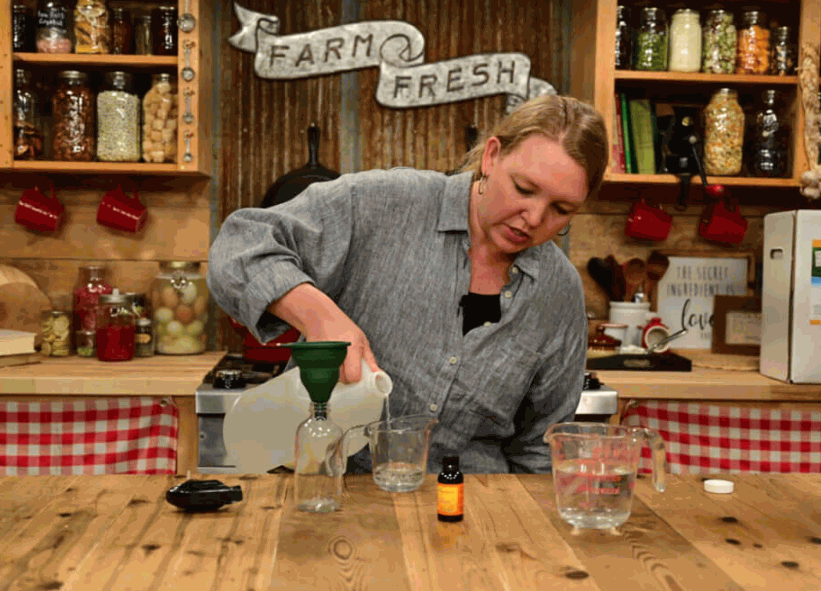
Glass Cleaner
Glass cleaners are essential supplies for maintaining the cleanliness and clarity of bar glassware, contributing to a positive customer experience.
When high-quality glass cleaners are used, they can effectively remove stubborn residues like lipstick, grease, and beer foam that often cling to bar equipment.
- These cleaners typically feature streak-free formulas, ensuring that glassware sparkles without unsightly smears.
- They are often designed to be safe on various materials, preventing any damage to delicate glass finishes.
The impact of impeccably clean glassware on customer perception cannot be overstated; patrons are more likely to feel valued and pleased when served drinks in clear, spotless vessels.
This attention to detail not only enhances the visual appeal of drinks but also fosters a sense of professionalism and care within the establishment.
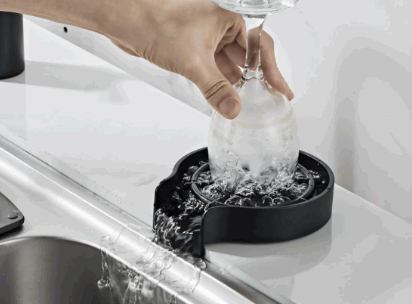
Floor Cleaner
Using an effective floor cleaner is essential for maintaining cleanliness and preventing slips in the bar area, which directly affects customer safety and satisfaction.
In a bustling bar environment, the choice of floor cleaner can significantly influence not only hygiene but also the overall ambiance. It’s crucial to consider products that are specifically designed for high-traffic areas, ensuring they cut through grease and grime without leaving harmful residues. Regularly scheduled cleanings, complemented by the right cleaning solutions, can dramatically enhance the bar’s appearance while keeping patrons safe.
- Choose eco-friendly cleaners that are safe for both surfaces and the environment.
- Utilize methods such as mopping and scrubbing to remove stubborn stains and buildup effectively.
- Incorporate floor mats at entrances to minimize dirt tracked indoors.
By embracing these practices, any bar can create a welcoming atmosphere that keeps customer safety and satisfaction at the forefront of its operations.
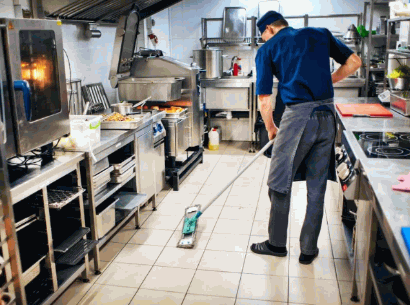
Sanitizer
Sanitizers are crucial in bars for ensuring that surfaces are free from harmful microorganisms, particularly in food and beverage preparation areas.
Proper sanitation practices involve utilizing various types of sanitizers, each tailored to specific needs and applications. These include but are not limited to, alcohol-based, chlorine, and quaternary ammonium sanitizers.
For effective results, the application methods can vary:
- Alcohol-based sanitizers are often sprayed directly onto surfaces and left to air dry, making them a quick solution for immediate cleanliness.
- Chlorine sanitizers usually require diluting with water and soaking items for adequate contact time to eliminate pathogens.
- Quaternary ammonium products, known for their versatility, can be wiped on or soaked as per the product instructions.
Integrating these methods into daily routines not only upholds hygiene standards but also enhances overall customer safety and satisfaction in the establishment.

Sponges and Cleaning Cloths
Sponges and cleaning cloths are critical tools for carrying out various cleaning tasks throughout the bar, from wiping down surfaces to cleaning glassware.
Maintaining cleanliness and hygiene in a bustling environment is crucial, and selecting the right type of sponge or cloth for each task can significantly improve efficiency and effectiveness. Different materials, such as microfiber, cellulose, or non-abrasive sponges, serve specific purposes and may have unique benefits.
- Microfiber cloths are particularly effective at trapping dust and grime without the need for harsh chemicals.
- Cellulose sponges are excellent for absorbing spills, making them ideal for quick clean-ups.
- Non-abrasive options prevent scratches on delicate surfaces like glassware.
By investing in the appropriate tools, one not only enhances the overall cleanliness of the establishment but also contributes to a healthier environment for both staff and customers.
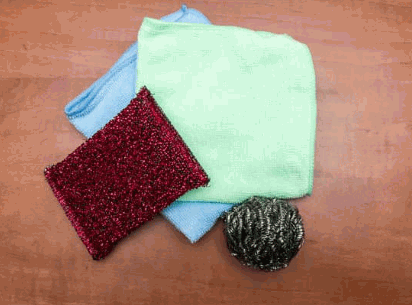
Gloves
Using gloves during cleaning tasks in a bar is vital for maintaining hygiene and protecting staff from potential chemicals or contaminants.
When considering the various types of gloves available, it’s essential to choose ones that not only suit the task at hand but also offer the right level of protection. Generally, there are three primary types of gloves used in bar cleaning:
- Nitrile gloves – These are resistant to a range of chemicals, making them ideal for tasks that involve harsh cleaning solutions.
- Latex gloves – Known for their flexibility and comfort, they provide good dexterity; however, some individuals may have allergies to latex.
- Vinyl gloves – More affordable than the others, they are suitable for low-risk tasks and offer basic protection.
Utilizing these gloves not only enhances the bar’s cleanliness but also sets a professional standard that patrons appreciate. The right gloves can significantly reduce the risk of cross-contamination, especially when handling food and beverages, ensuring that customers enjoy a safe and hygienic experience.
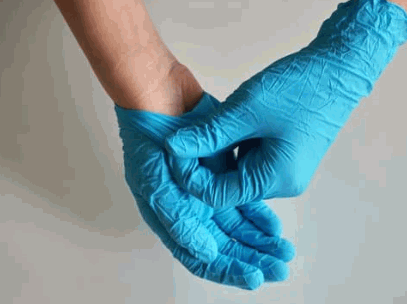
How to Create a Bar Cleaning Checklist?
Creating a bar cleaning checklist involves outlining specific tasks and responsibilities that must be adhered to for effective cleaning and maintenance of the bar environment.
Identify Areas to Be Cleaned
The first step in creating a bar cleaning checklist is to identify all the areas that require regular cleaning to maintain bar organization and hygiene.
This process involves breaking down the bar into specific zones, each with unique tasks and cleanliness needs. Understanding that high-traffic areas, such as the counter and seating sections, demand more frequent attention can significantly enhance the customer experience.
Proper categorization can help prioritize tasks based on the frequency of use and customer interaction:
- Priority 1: Areas with constant contact, like tables and menus.
- Priority 2: Frequently visited zones, such as the bar itself.
- Priority 3: Less accessed spaces, like storage rooms.
By focusing on these aspects, bar owners can ensure that overall cleanliness positively affects the ambiance and customer satisfaction.
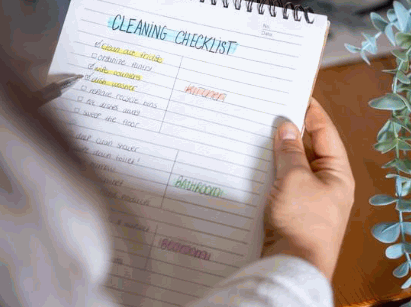
Determine the Frequency of Cleaning
Once the areas to be cleaned have been identified, the next step is to determine the appropriate frequency of cleaning for each area to ensure ongoing cleanliness.
Establishing a systematic routine not only promotes a sanitary environment but also enhances overall operational efficiency. Daily, weekly, and deep cleaning schedules need to be thoughtfully crafted as they play a crucial role in maintaining hygiene standards and minimizing health risks.
- Daily cleanings can focus on high-touch surfaces like countertops and equipment.
- Weekly tasks may include deeper cleaning of areas that accumulate grime, such as storage spaces or behind appliances.
- Setting aside time for more thorough deep cleaning helps in addressing hard-to-reach spots, ensuring nothing is overlooked.
By adhering to these routines, bar staff can provide a welcoming atmosphere while safeguarding both their patrons and themselves from potential health hazards.
List Necessary Cleaning Supplies
It is essential to compile a list of necessary cleaning supplies needed to execute the cleaning checklist effectively and uphold sanitation practices.
Choosing the right tools and products is crucial, as they can significantly influence both the effectiveness of cleaning efforts and the overall health and safety of a space. For instance, using multi-surface cleaners is beneficial in common areas, while specialized solutions, such as those designed for kitchens or bathrooms, help tackle more challenging grime and germs.
Understanding the specific needs of each area ensures that the chosen cleaning supplies not only enhance cleanliness but also adhere to the required hygiene standards. It’s important to consider eco-friendly options that minimize your carbon footprint while still providing effective results.
- Read labels to understand the active ingredients.
- Select non-toxic options for homes with children or pets.
- Assess the needed level of disinfection for healthcare or food preparation areas.
Assign Responsibilities
Assigning cleaning responsibilities to bar staff ensures accountability and helps maintain a consistent cleaning schedule within the establishment.
Breaking down the cleaning tasks based on individual roles and shifts not only streamlines operations but also fosters a sense of ownership among the team. Each member, whether they’re a bartender, bar back, or server plays a vital role in upholding the bar’s standards. To promote teamwork, consider the following:
- Clearly outline cleaning duties during shift changes.
- Rotate responsibilities to keep everyone engaged.
- Encourage regular communication to identify any areas that need more attention.
Ultimately, when staff members understand their specific responsibilities and collaborate towards a common goal, it creates an environment where cleanliness is prioritized, enhancing the overall experience for both employees and patrons.
Sample Bar Cleaning Checklist
A sample bar cleaning checklist serves as a practical reference for bar staff to ensure that all necessary cleaning tasks are completed efficiently and effectively.
Maintaining a safe and inviting atmosphere in any bar is crucial for customer satisfaction and overall success. Regular cleaning not only enhances the establishment’s appeal but also complies with health regulations. A systematic approach, as outlined in a detailed checklist, can streamline the process.
Here’s a comprehensive outline of tasks that can be included:
- Bar Area: Wipe down surfaces, sanitize drink preparation tools, and restock supplies.
- Glassware: Clean and polish all glasses, checking for chips or cracks.
- Flooring: Sweep, mop, and ensure spills are dealt with immediately to maintain safety.
- Restrooms: Disinfect toilets, and sinks, and replenish toiletries.
By following this checklist regularly, bar staff can uphold high cleaning standards, ensuring a welcoming environment for patrons.







